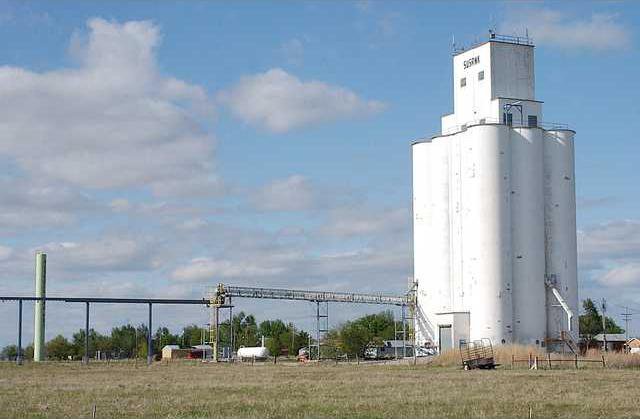SUSANK – Things are dry in the northeast Barton County community of Susank, and they are about to get dryer. The Russell Rural Water District No. 3 based there issued a notice to its users this week requesting they do what they can to save water, a resource made more precious by the blistering hot, dry summer.
“Due to the lack of moisture, we are asking all our customers to conserve water by cutting back on all watering,” said Ron Nuss, district manager. “If you have any faucets, toilets or outside hydrants leaking, these need to be fixed.”
The request comes after the City of Otis received word from state officials it had to reduce water use, Nuss said. The district purchases its water from Otis, so the order went down the pipeline to Susank.
“We’re going to the conservation phase,” Nuss said. This is the initial phase of a multi-level conservation plan.
If things get worse, the next step would be to limit water uses. In RRWD No. 3, that could mean a restriction of pasture and livestock watering.
The lack of rain has caused a depletion of the Walnut Creek Basin from which Otis draws its water. As a result, the city’s well level was not recovering.
How long with this be in place? “It’s hard to say,” Nuss said. “What we need is a good general rain.” That might recharge the aquifer and prompt a lifting of any restrictions.
“We’re lucky we got this notice in the fall when temperatures are not as much of a factor,” Nuss said. “If we’d gotten it at the beginning of summer with all the hot weather, we’d have been in dire straits.”
The district serves 482 customers in parts of northern Barton County, southern Russell County and northeast Rush County.
According to the Kansas Rural Water Association, drought continues in Kansas with nearly three fourths of the state abnormally to exceptionally dry. Gov. Sam Brownback ordered Sept. 2 that three more counties be added to Drought Watch status, moving 18 counties up to Drought Warning and two into Drought Emergency. A total of 80 counties are under state drought stages, with 17 counties in an emergency stage, 42 in Warning (including Barton) and 21 in Watch (including Rush and Russell).
The KRWA’s three-tier system, emergency status is the worst and watch is the least severe.
Dry summer prompts water conservation
Rural district asks customers to fix leaks, reduce watering





